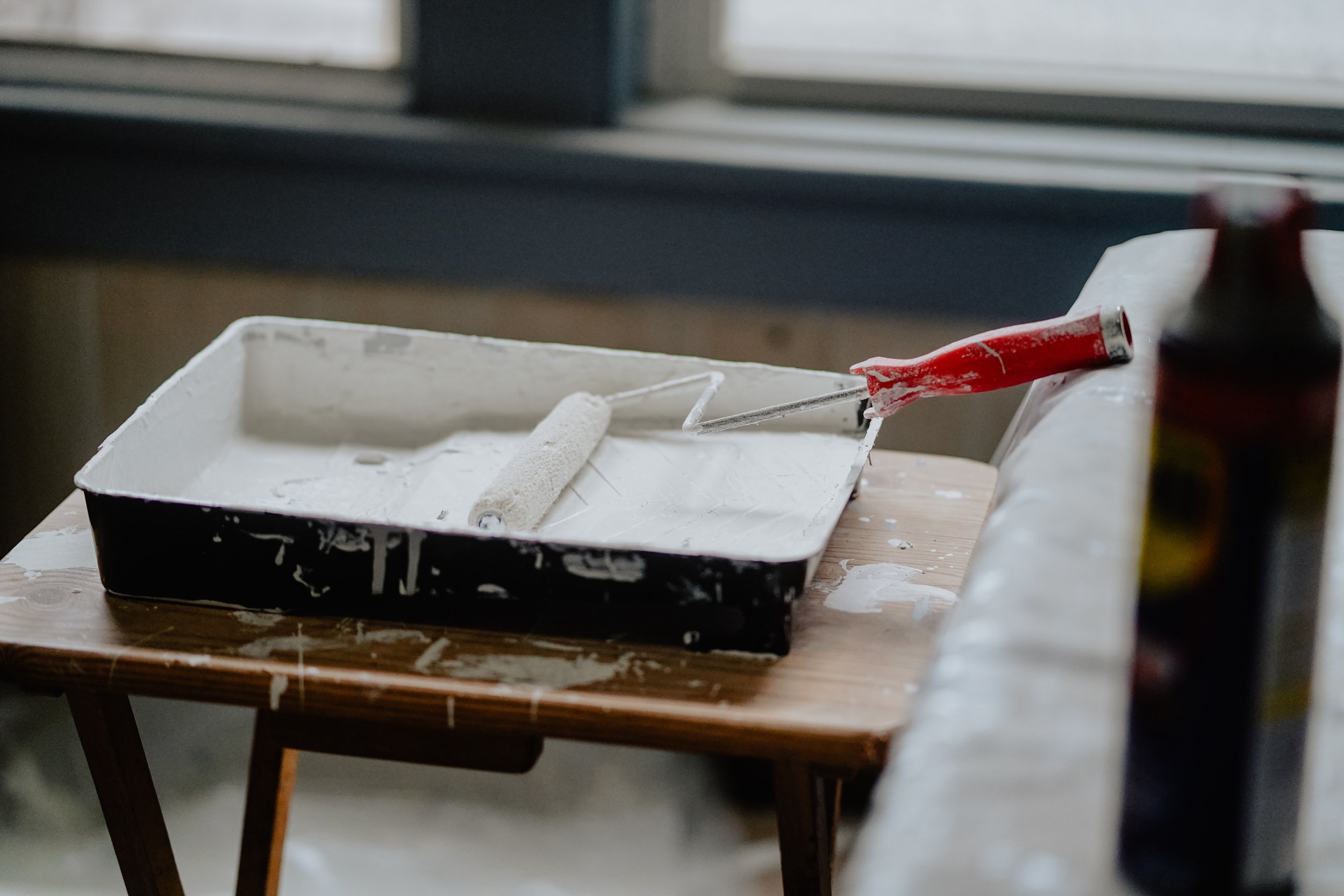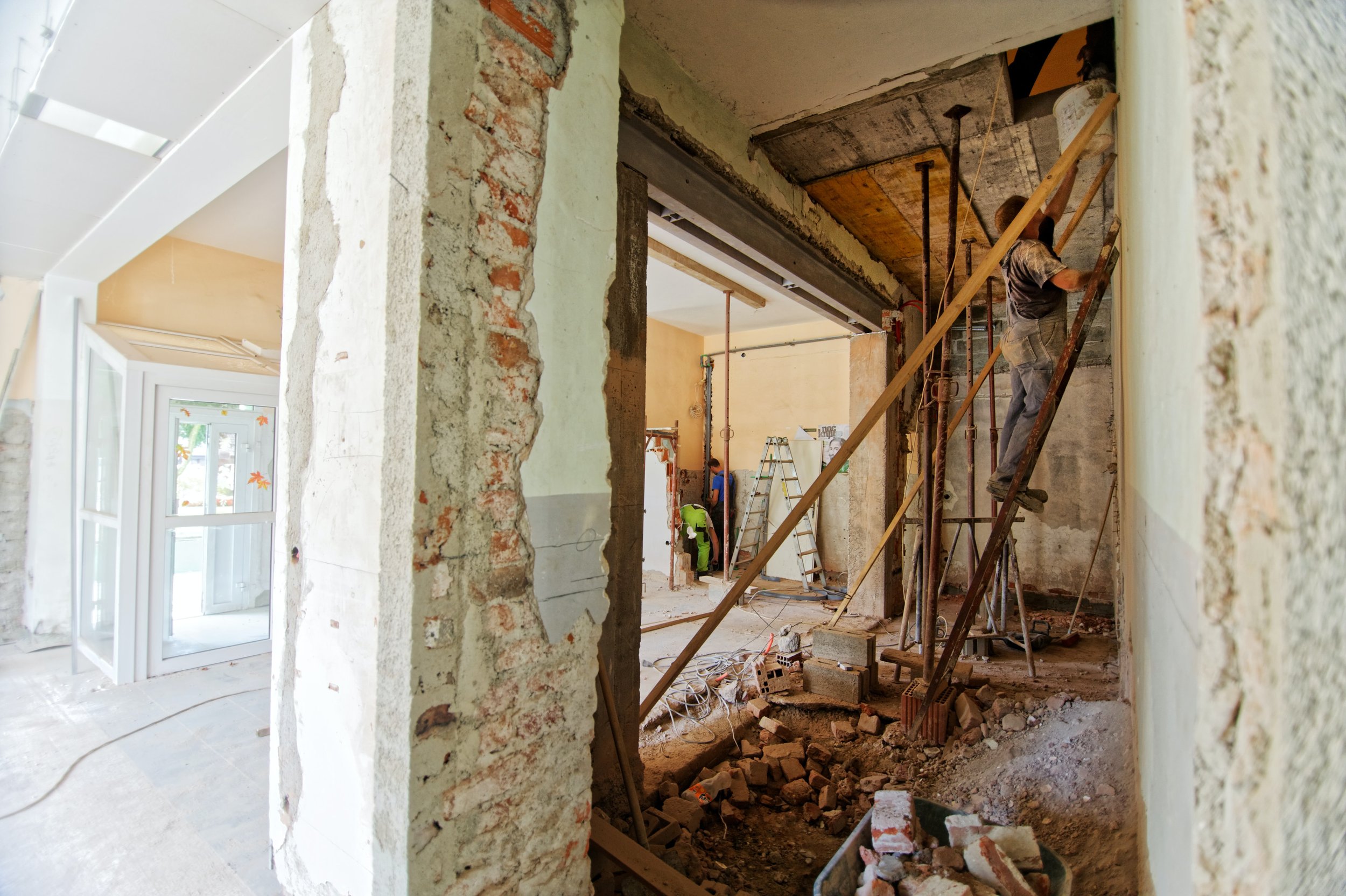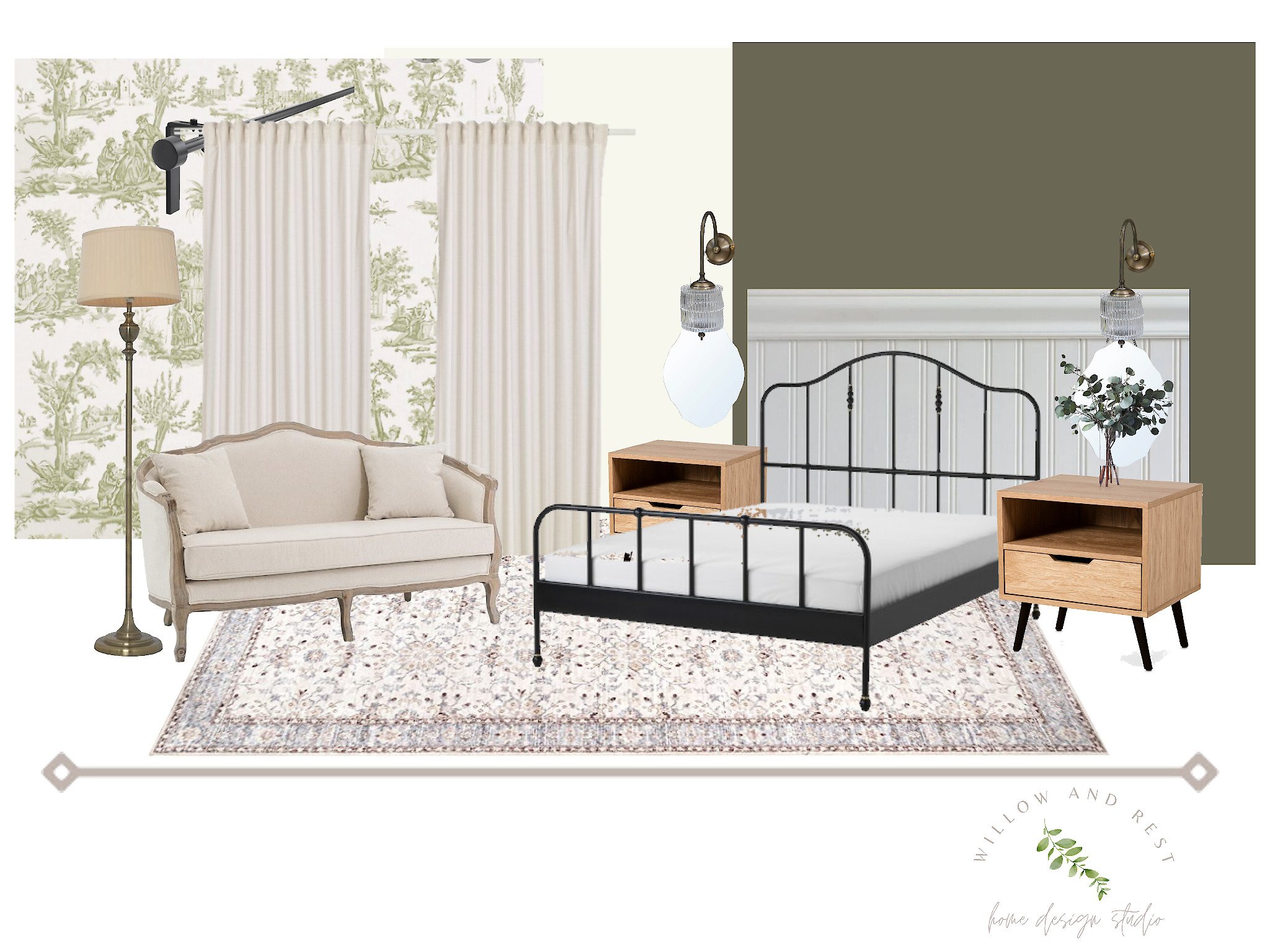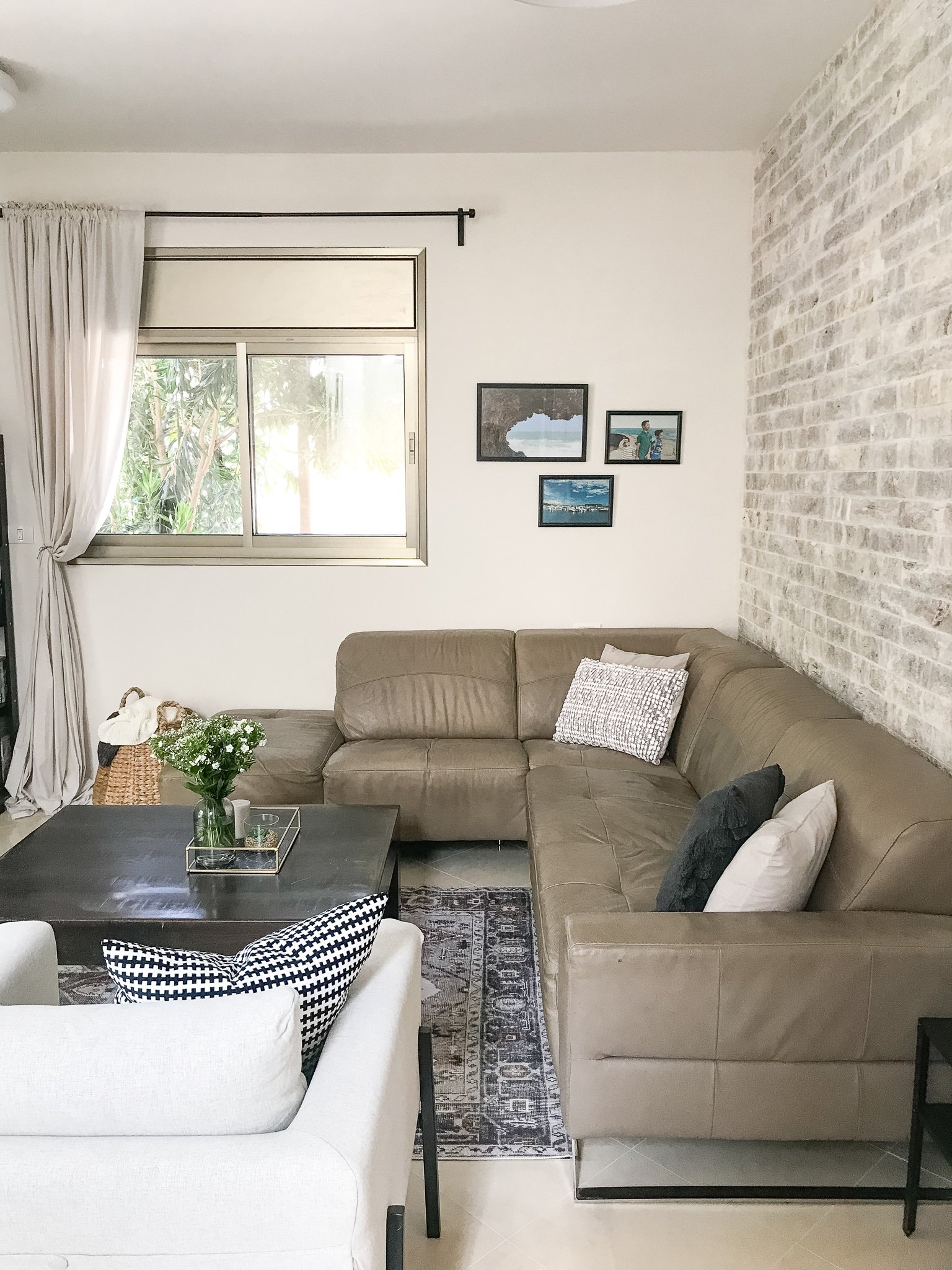The Anglo's guide to Shiputzim…
Shiputzim… You might be wondering what this even means…!
It’s a word we hear almost daily here in Israel, it means renovations. But we can rest assured that there is always a shiputz going on somewhere - usually the place we need to be, at all times.
The bank, the post office, the doctors office, and of course - the supermarket.
Oh - and don’t forget about the neighbours.
The upstairs neighbour, the next door neighbour, the apartment below neighbour… We live in a country obsessed with shiputzim!
But we’re also overwhelmed by them.
And it’s not surprising at all! It’s a minefield to navigate, it’s complicated, there’s language, there’s culture, there’s logistics that require a PHD in diplomatic relations like you wouldn’t believe, and trust me - as someone who does this for a living, there are more headaches on offer than we could care to count!
But Israelis never like to appear too far behind the Americans, or the Europeans, so we like to constantly update ourselves, so we at least look like we’re keeping up. The results might be great! But the process can be highly stressful, and a bit of a nightmare.
The key to having a successful renovation is your contractor, or “Kablan” as we call them here.
A kablan that you can trust, rely on, brings in expert help and workers, AND finishes things to a perfect, and high-end finish is GOLD.
They are rare, often very expensive, and difficult to nail down because they’re in such high demand.
This was one of the pieces of my business that I am so grateful to have had in place from the beginning. Mohammed is the key to my business. I trust him 100%, he is a perfectionist, he knows everyone there is to know in construction, and he has gone above and beyond what has been asked, time and time again.
How did I find him, you ask?
He built my own house! So I know his work lasts, as I live with it on a daily basis!
One thing I get asked a LOT is “Where can I go to get XYZ done in Israel”?
Usually referring to “A bathroom” or “A Kitchen”.
There is no such thing.
I know.
It’s such a pain!
You cannot walk into ONE store, and order ALL you need for a bathroom, or kitchen.
It makes no sense, I know… but let’s just clarify one thing before we go any further - NOTHING in Israel makes sense…!!
Get used to adding a million numbers to your phone that look something like this:
Marble worktop Man
Parquet Man
Parquet installation Man
Handles for kitchen Man
Paneling Man
Wood supplies Man
Carpenter Man
Kitchen cupboards Man
Tap Man
Gas Man
Electrics Man
Metal works Man
And my list has about 7 options of each one of those, depending on location, style, price, and availability….
And don’t get me started on why none of these are women….!
Yep.
Like I said.
It doesn’t make sense!
But that’s where having an interior designer comes into play.
I’m the one that pulls all these pieces together to form a cohesive plan, hopefully, smooth logistics, and, hopefully, a relatively stress-free process.
The first thing you need to do if you want to do renovations is; go nuts on Pinterest!
Create a board for each room you want to renovate and figure out exactly what your style is.
What colours, styles, patterns, furniture, inspirations are you repeatedly being pulled towards? And cull as you go - filter, remove and edit your boards so that what you’re left with is a really good representation of what you want.
When you’ve exhausted Pinterest, and have your boards all filled with beautiful images, you should find an interior designer who you can really connect with, on a personal level. This is someone who will be a very close part of your life for a season, who will be coming in and out of your most personal spaces often and will see you on your worst days. They should be someone you like, get along with, and don’t mind being around. I think as an Interior Designer, my most important skills are people skills. Not just for the sake of my client, but with each of my workers, both Arab and Jewish, as well as every other nationality that is represented here, and of course my incredible suppliers.
My clientele is mostly (but not exclusively) made up of Anglos here in Israel, who have struggled to navigate the jungle that is Middle Eastern renovations! They don’t have the contacts, numbers, connections, or know-how, to find them here in Israel. Or, they simply don’t have the language. My business has become a bridge between these worlds, so that they can have all the results, with none (I hope!) of the stress.
Mood boards should contain paint codes, shoppable links, tear sheets, sourced items, and a full budget.
My first port of call with a client is to understand what the most important uses of the room are. It’s all fine and dandy having a beautiful design in your head, but it has to also be functional. I’m a big fan of beautiful functionality, and just because a room has a function, or is a high traffic area, doesn’t mean that it can’t also be beautiful! Some of my favourite rooms have been boot rooms and laundry rooms!
The most important part of the renovation process is the mood board, and visualisations of the rooms we’re dealing with.
Don’t EVER skip this step, for any project, in any house, EVER!
This will be your reference point over and over again through the process. Even when you’re down to picking cushions, plants, or a salt and pepper shakers - that mood board will still be your plumb-line on the overall design.
I’ve seen so many people launch into a renovation either solo, or by working directly with a contractor, who end up lost in a mess of design ideas, decisions and directions. The mood board and design briefs are the constants that will pull you back from a million tangents, ideas, exciting directions, and temptations! Even as a designer, I find myself constantly checking myself against the agreed mood board and saying “no, it doesn’t fit with the design brief”.
What about bigger items like Floors, Bathrooms, and Kitchens?
When looking at Kitchens and Bathrooms, these are larger ticket items that go beyond some paint and new furniture, and usually include demolition work, and rebuilding. This is where having a good contractor comes into its own, but that mood board, technical drawings and creative briefs are also even more important. While the contractor might have the skills to do the labor, they may not have any design in mind. So questions like “how far apart are the tiles supposed to be? If they are right up next to each other - how will you grout between them? Does it need a different adhesive? Where should the electrical points be in the kitchen? What are the laws about electrics in the bathrooms?”… There are a million things that the designer needs to think about, should have covered by technical drawings that can be given to the contractor for reference (including layouts, patterns and directions of tiles for example!) that the clients don’t even consider, and the contractor doesn’t know. But somehow we all expect a certain result at the end!
A great example of this is an ongoing hilarious conversation with my contractor about the colour white.
For him, white is just a tub of uncoloured, untinted paint.
That is white.
Anything else is beige.
For me, there are thousands of shades of white, and untinted white is just paint that hasn’t come alive yet.
I will continue to educate him….!
But what about nitty-gritty details like “how much time does it take!? and How much does it all cost!?”
My contractor always estimates that a bathroom should take approximately 2 weeks from demolition to being able to be used again.
Obviously, this will vary with size, and how much re-working of the infrastructure is needed. If you need all the water points moving, and all the plumbing being reworked and rearranged, this will add time. But if you’re basically replacing more or less what is there, this is a good estimate for time.
In terms of cost - I hate this question! It is mostly down to taste!
It is possible to do a bathroom for a relatively small amount, but that is entirely dependent on picking out cheaper materials and not having a lot of plumbing issues. I’d say the minimum you could expect to pay for a mid-sized bathroom, with mid-priced materials would be 20-30K NIS, before labor.
Kitchens are a different story!
I prefer to work with local craftsmen, over large manufacturers.
For many reasons! But mostly because if they’re local I can pop in any time it’s needed to answer questions, check progress and deal with issues. I’m known by them, I have a relationship with them, I can much more easily do custom designs, and the lead time tends to be shorter, while the craftsmanship is of a higher quality.
I think it’s important to bring my clients suppliers that I can trust, stand behind and depend on, rather than fast and cheap options. So far this has proven to be the correct way for me to work, and the results and products in my client’s homes have been much more satisfactory, long-lasting, and quality than other options that we’ve considered.
It also depends on the kind of renovation you’re doing on your kitchen. Are you ripping it out completely, and starting from scratch down to layout, electrics, and water / gas replumbing? Or are you happy with your layout and just want to update your aesthetics, like cabinet and drawer fronts, and tiling and worktop refreshes? There is a HUGE range of costs, options, and time frames when it comes to updating kitchens, some need months, others are much quicker.
My business has handled a few kitchen projects now, both facelifts, builds from scratch, and from the building and architecture stage, and each project has been wildly different in style, shape, size, cost, and lead time! Unfortunately, there is no magic formula! But I’m happy to say, I do have a magic carpenter company who in my opinion, are the best in the business!
Flooring is another update that has a HUGE impact on a home and can range massively in price. At the moment I am seeing a pretty consistent demand for parquet flooring, which makes sense since it is a cost-effective option, and requires no removal of flooring beforehand. Here in Israel, we all start with a tile floor, so adding it is a very mess-free way to update and completely change an interior, and it can be cost-effective too.
Recently the arrival of SPC wood, which is (usually, German) engineered hybrid of solid wood with laminate components, has brought us a very high quality, durable, scratch, and pet-proof option, for a much smaller price tag than the solid wood option. Up until recently, we’ve only had Laminate (less quality, and cheaper - perfect for cladding walls with no foot traffic!) OR solid wood options. I’m very excited about the options that have opened up with SPC, and the quality is outstanding.
When looking at SPC parquet flooring, you should factor in anywhere between 150 - 250 NIS per meter Sq, plus 20% spare, plus 50NIS / m for installation. If you’re looking at laminate, you could probably get it for between 80 - 180 /m2. Solid wood you’re looking at 280 minimum /m2.
How to pull it all together?
This is often the most overwhelming part of the job.
You’ve paid out all this time, effort and money to buy new furniture, paint, renovate the bathroom, or have all your windows replaced, but now what?!
Again - this is where your designer is your saviour.
The hardest part of a shiputz is to pull the design together at the end.
It’s always the smallest things that you don’t notice, that make the biggest difference - and we can never quite put our finger on it, but it’s the difference between 90% done, and home.
The home styling element to your renovation is, in my opinion, the most impacting, and the most important. Don’t skimp on this stage, have your designer spend a few hours truly pulling the design together, creating the home and environment that you probably saw on Pinterest, but can’t quite pull together for yourself.
To sum up, Israeli Shiputzim are not to be underestimated!
Don’t enter into the process thinking of an American or European experience - most certainly not on your own!
But don’t be afraid of it! I’ve found myself in some absolutely ridiculous situations and managed to come out the other side with better relationships all around. I’ve learned the hard way not to trust suppliers that aren’t recommended or tried and tested, and I’ve worked very hard to build my network of suppliers, installers, craftsmen, and partner businesses that I can stand behind, recommend, trust and work well with.
My top tips would be:
1. Find the right interior designer - preferably one who comes with a Kablan they know and regularly work with
2. Make sure you have 10-15% more budget than your budget - things ALWAYS go wrong, and if they don’t, then - Happy Birthday!
3. Only work with suppliers that are recommended, cheaper does NOT mean better here!
4. Don’t work without a mood board, layout plan and technical drawings or guide. It will save you a LOT of headaches, money, fixes and revisions along the way. Better to take time on nailing the brief, than fixing the bathroom!
5. Enjoy the adventure - you’ll probably learn more about the culture through this, than any Ulpan course could ever teach you!













